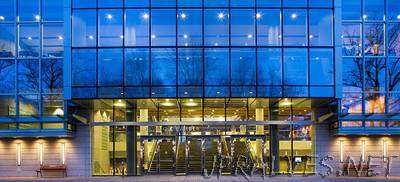
“For the first time in Canada, a University of British Columbia engineer has found a way to use Wi-Fi to determine the number of building occupants and adjust ventilation accordingly – saving energy without sacrificing air quality. “Every day, thousands of smartphones, laptops and tablets connect to the Wi-Fi network at UBC,” said Stefan Storey, who holds a master’s in mechanical engineering and a PhD in resource management and environmental studies from UBC. “Our Bridge software anonymously counts the number of wireless devices in each room and passes the counts on to UBC’s building control system, which then adjusts airflow through the relevant building, practically in real time.” Based on an occupant count, the control system can vary the airflow to a room, ramping it up for a busy lecture, or down during the times in between. UBC worked with Storey to test the technology at the Irving K. Barber Learning Centre library, which serves thousands of students and staff. They found that it reduced energy consumption by five per cent over a period of 12 months, while maintaining air quality and occupant comfort. David Woodson, UBC’s managing director, energy and water services, says the new system could help the university reduce greenhouse gas emissions by hundreds of tonnes and save as much as $100,000 in energy costs per year for core campus buildings. UBC is installing the technology in 10 more buildings over the next several months.”
